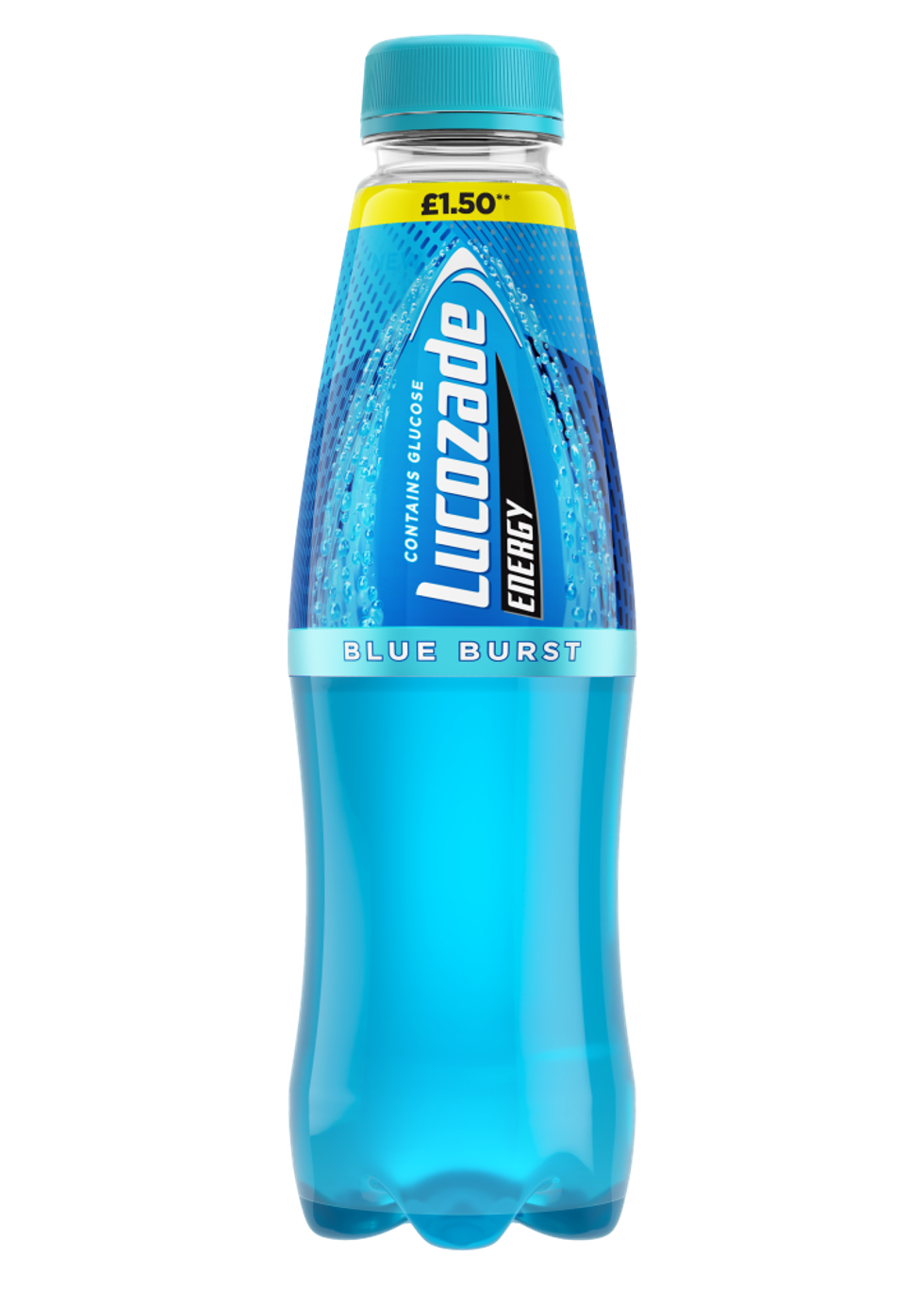Elise Seibold, Marketing Director at Suntory Beverage & Food GB&I, announces a fresh and fizzy marketing strategy for Lucozade, with a trio of true blue new products
Can you please give an overview of your brand
Lucozade has truly turned the market blue with the launch of three new drinks. Lucozade Sport Blue Force, Lucozade Energy Blue Burst and Lucozade Alert Blue Rush are all available now, uniting the sub-brands together for the first time in a change in Lucozade’s marketing strategy.
The launch of Blucozade is the first time that all three Lucozade sub-brands have appeared side by side in a single launch, with new drinks across function, flavour and format. This cross-category innovation creates an exciting line up of new drinks across the Lucozade brand, adding a splash of colour to retailers’ chillers and creating real excitement for shoppers.
Each of the three new drinks in the Blucozade range is uniquely flavoured. The drinks’ names give little away, and it is up to shoppers to discern the flavour of these exciting new products.
Lucozade Alert Blue Rush is available in both standard 500ML and £1 PMP 500ML can formats, Lucozade Energy Blue Burst in 500ML and 900ML bottles, in price-marked and non-PMP variants, and Lucozade Sport Blue Force will also be available in 500ML bottles, in price-marked and non-PMP formats, as well as a four-bottle multipack non-PMP format.
How is your brand currently performing?
The launch comes off the back of an incredible year for Lucozade. Sales of Lucozade Sport were again strong in 2023, with the brand climbing in value by 21.2 per cent1, continuing the strong performance displayed in the previous year, helped by the launch of Lucozade Sport Zero Sugar last March. Within its first eight months on shelf, Lucozade Sport Zero Sugar delivered £8.5M in sales – growing faster than the total category – and is currently also 55 per cent incremental to the soft drinks category as a whole2.
Lucozade Energy also grew in value last year by 2.8 per cent3 following the introduction of a new look and taste for the brand’s Original and Orange flavours. The brand has recently moved its 380ml single SKUs to 500ml bottles, including Lucozade Energy Orange, Original, Apple, Cherry and Caribbean Crush flavours, as well as Lucozade Zero Pink Lemonade. The move also sees the introduction of a price-marked variant, RRP £1.504, available for the first time in 500ml format, offering a bigger bottle5 and better value6 for Lucozade Energy drinkers.
Elsewhere, the Lucozade Alert brand continues to go from strength-to-strength, and new Zero Sugar Mango Peachade helped the Alert range deliver incredible year-on-year growth of 31.4 per cent7.
How are you supporting your brand and NPD?
The introduction of Blucozade presents a key opportunity for retailers to brand-block, strategically showcasing the NPD and creating an unmissable eye-catching display for shoppers. This move is expected to drive up both purchase frequency and overall consumption within the Lucozade portfolio.
The launch will be supported through brilliantly impactful in-store POS across wholesale and convenience, as well as a shopper-facing campaign through April to drive awareness and create real demand at launch. Additional support will be seen across social media channels and Lucozade Sponsorship partners such as Anthony Joshua, The English Football Association and rugby player Marcus Smith to help drive relevancy and demand.
How important are independent retailers to your brand?
Blucozade is the biggest Lucozade launch ever, and the feedback we’ve had when bringing this to retailers has been overwhelmingly positive.
Independent retailers are crucial to the success of our brands, and Blucozade will be no different. They can create real excitement in store by blocking the three key 500ml formats together in chillers, helping us bring together all the Lucozade sub-brands for one bold new launch to help drive sales.
What trends are occurring in the sector?
The sport and energy drinks segments have continued to deliver significant value for retailers this year, acting as a real driver for the soft drinks category. In fact, both sport and energy drinks are growing ahead of the category, currently seeing 37.5 per cent8 and 15.4 per cent9 value sales growth respectively in the convenience channel.
Blucozade taps into a desire from shoppers for excitement and surprise from their soft drink purchases. Shoppers are already purchasing more Lucozade drinks per trip, with an uplift of +3.3 per cent10 , and 43 per cent of shoppers are more likely to purchase drinks with appealing flavours11. The launch of three new flavours alongside its existing range means Lucozade is well positioned to cater to this consumer preference.
Describe your brand in three words …
New, Blue, Lucozade.
[1] Nielsen, Lucozade Sport, GB Total Coverage including Discounters, Soft Drinks, Value, YOY 52 weeks to 30.12.23
2 Nielsen, GB Total Coverage Incl Discounters, MAT Oct 2023
3 Nielsen, Lucozade Energy, GB Total Coverage including Discounters, Soft Drinks, Value, YOY 52 weeks to 30.12.23
4 All RRPs are recommendations only. Retailers remain entirely free to set retail prices at their own discretion
5 32% bigger pack vs. Energy 380ml
6 9% more value from a pence per ml perspective Lucozade Energy 380ml £1.25 PMP vs Lucozade Energy 500ml £1.50 PMP
7 Nielsen, Lucozade Alert, GB Total Coverage incl. Discounters, Soft Drinks, Value, YOY latest 52 weeks to 28.10.23
8 Nielsen, Sport, GB Total Coverage Convenience, Soft Drinks, Value, YOU latest 52 weeks to 24.02.24
9 Nielsen, Energy, GB Total Coverage Convenience, Soft Drinks, Value, YOY latest 52 weeks to 24.02.24
10 Kantar Worldpanel, December 2023
11 Mintel Functional Drink Consumer Trends, 24 May 2023







